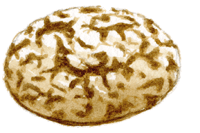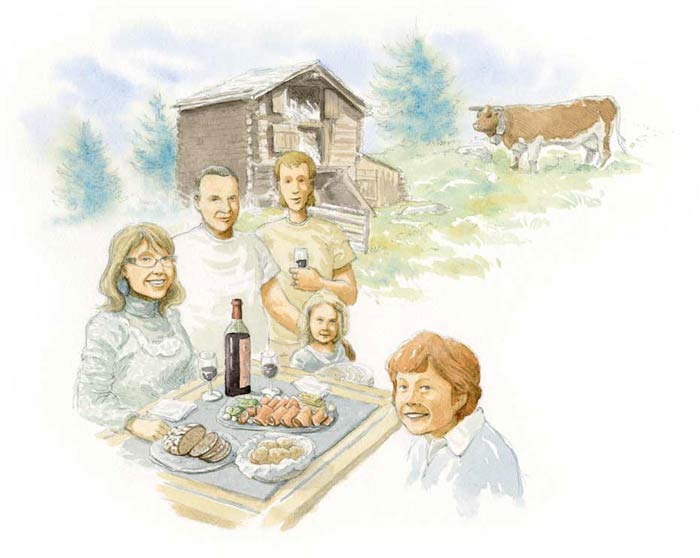Valais rye bread

Form: Round ball with crackled crust
Country of origin: Switzerland
What distinguishes it from other methods of bread making: Sourdough (leavened) bread meeting very precise specifications
Category of bread: (3 and 5) Black bread in the same great tradition as German (bauernbrot, pumpernickel), Russian (borodinski) or Danish (rugbrød), etc. black breads
Particularity: Obtained an A.O.C. (Appellation d’Origine Contrôlée) in 2004
Ingredients: Rye flour (at least 90%); wheat flour; leaven; baker’s yeast; salt; water

Switzerland
Valais rye bread is a sort of historical note. Rye bread in the purest tradition of European black breads, it was part of the history of generations of men and women who decided to live on this land of the Valais, some of the highest land in Europe. Because rye is the only grain that these rough conditions can survive, the people from the canton of Valais adopted it for lack of any other competition and out of regard for this endurance that equaled their own. This black bread is therefore a symbol of the extreme challenges that the inhabitants of the Valais face in their day-to-day life.
A true working drawing, where nothing which is not essential, justified, certified enters into the plan, this Valais rye bread also stands out above all for its crust, of which the poet Francis Ponge must have dreamed many times: “So an amorphous mass in the process of belching was slid into the stellar oven for us, where in hardening it formed valleys, crests, undulations, crevices…And all these outlines then so clearly linked to each other, these thin slabs where the light, with much effort, lays down its fire, without any regard for the underlying revolting softness.” (“Le Pain,” Le parti pris des choses, 1942). It surface is fissured “terrain” rather like that of the Valais, in a way, obtained through mastery of the fermentation of the sourdough starter.
The dough must contain at least 90% rye flour, and no more than 10% wheat flour; it is sprinkled with leaven in extremely precise proportions: 1,400 g flour (rye + wheat), 700 g leaven, 1,000 g water, 35 g salt, 15 g yeast and, optionally, 30 g dry leaven. It is placed in a vat and put to the side until it has doubled in volume. It is then shaped into dough rolls according to three standards: 250 g, 500 g and 1 kg (after baking). This is left to expand until it can be torn. Valais bread has now seen the light of day. Now it suffices to lightly press on its ridges and crevices before it goes into the oven so they will expand even more during baking.

